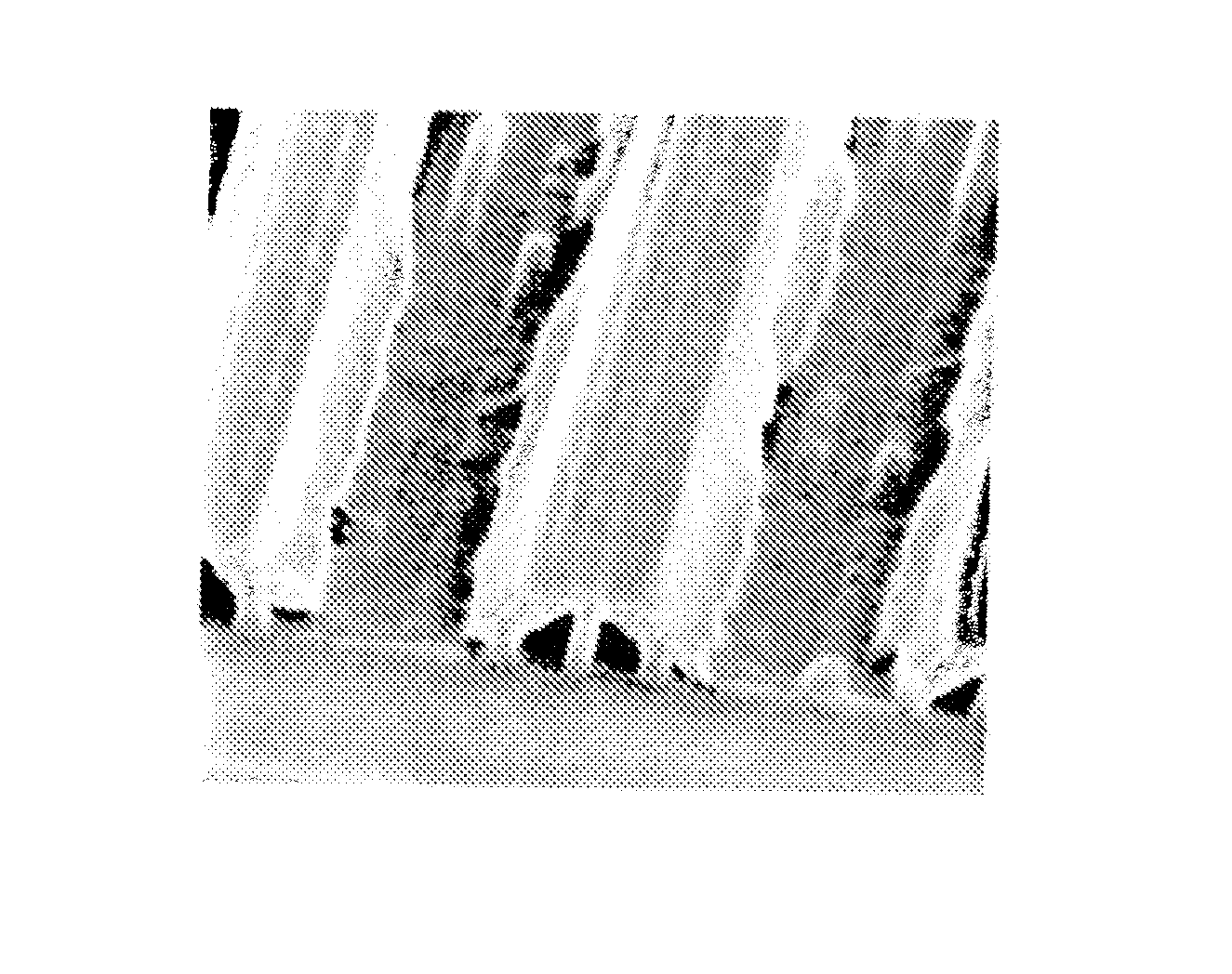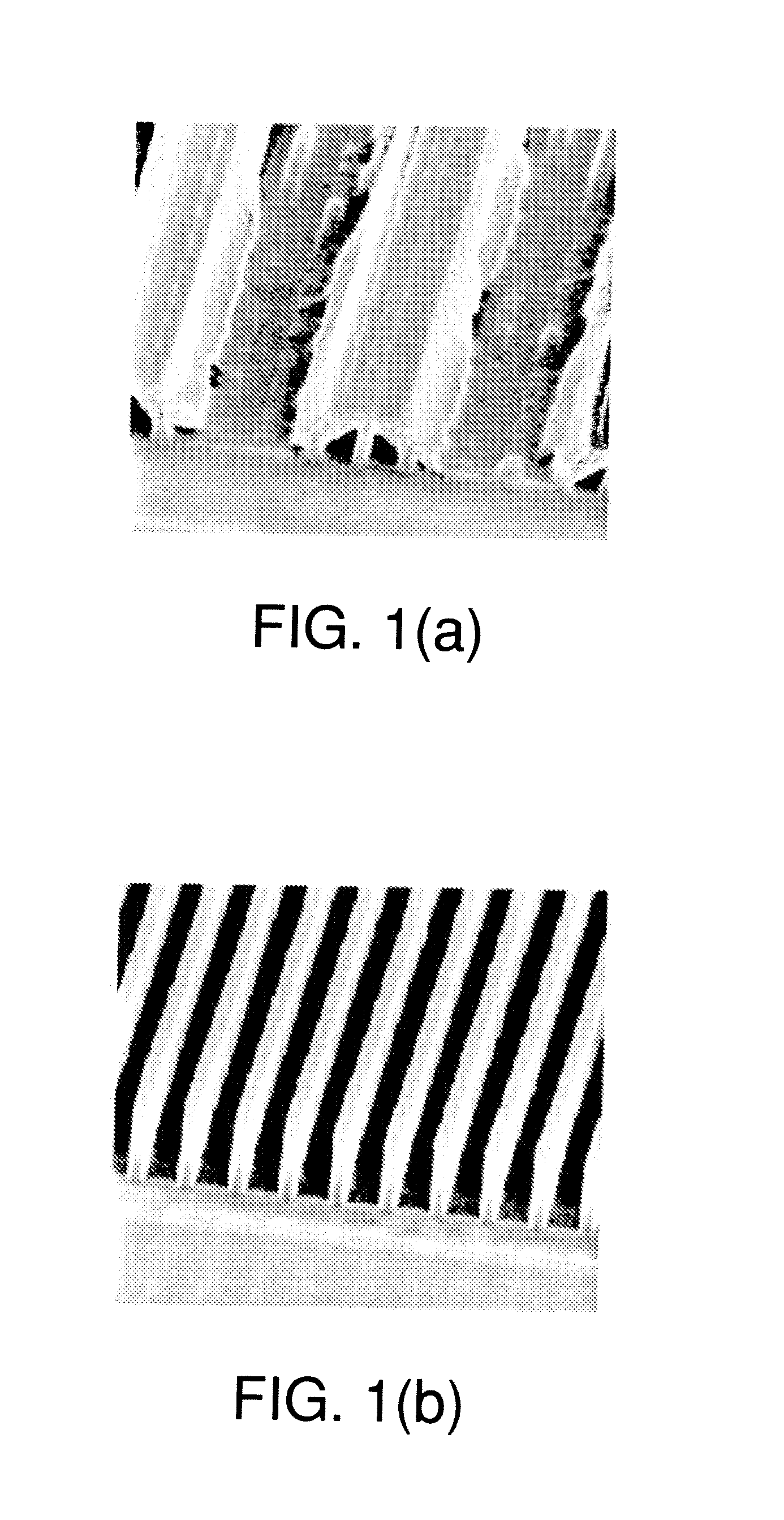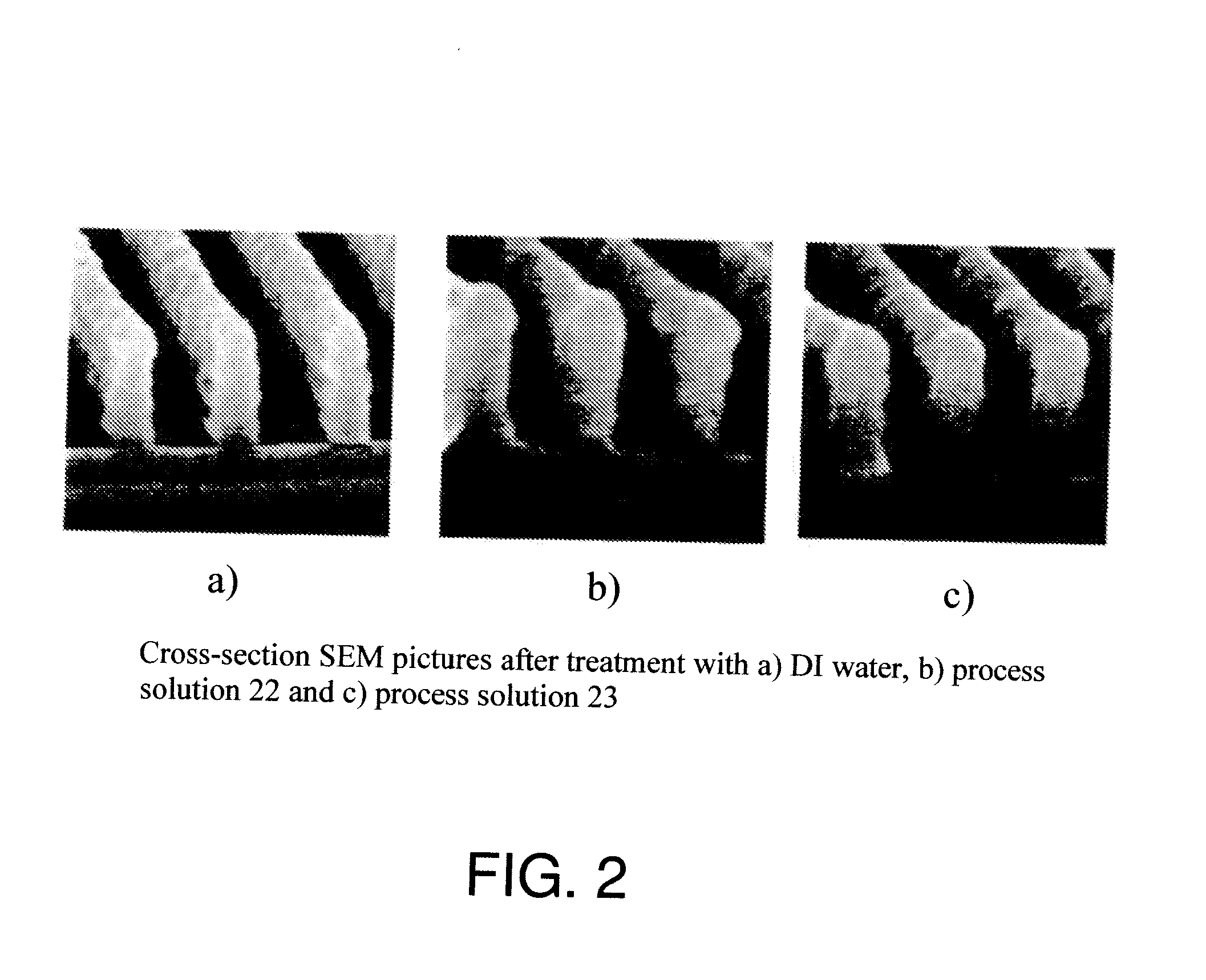Process Solutions Containing Surfactants
- Summary
- Abstract
- Description
- Claims
- Application Information
AI Technical Summary
Benefits of technology
Problems solved by technology
Method used
Image
Examples
examples 1 through 5
Dynamic Surface Tension (DST)
[0059] Five process solutions containing acetylenic diol surfactants derived from 2,4,7,9-tetramethyl-5-decyne-4,7-diol (examples 1 through 3) or 2,5,8,11-tetramethyl-6-dodecyne-5,8-diol (examples 4 and 5) were prepared by adding 0.1 weight percent of the surfactant to deionized water under continuous stirring.
[0060] The dynamic surface tension (DST) data for each process solution was collected via the maximum bubble pressure method described in Langmuir 1986, 2, pp. 428-432. The data was collected at bubble rates that range from 0.1 bubbles / second (b / s) to 20 b / s using the Kruss BP3 bubble pressure tensiometer manufactured by Kruss, Inc. of Charlotte, N.C. The molar units of EO and PO for each example and dynamic surface tension data is provided in Table I.
[0061] The dynamic surface tension data provides information about the performance of a surfactant at conditions from near-equilibrium (0.1 b / s) to relatively high surface creation rates (20 b / s). ...
examples 5 through 7
Foaming Properties
[0062] Three process solutions containing acetylenic diol surfactants derived from 2,4,7,9-tetramethyl-5-decyne-4,7-diol (examples 5 and 6) or 2,5,8,11-tetramethyl-6-dodecyne-5,8-diol (example 7) were prepared by adding 0.1 weight percent of each surfactant to deionized water under continuous stirring.
[0063] Foaming is an undesirable side effect of surfactants in rinse solution. The foaming properties of examples 5 through 7 were examined using a procedure based upon ASTM D 1173-53, the Ross-Miles test method, and the results are provided in Table II. In this test, a 200 ml quantity of each process solution is added from an elevated foam pipette to a foam receiver containing the 50 ml of the same solution at room temperature. The Ross-Miles method stimulates the action of pouring a liquid into a cylindrical vessel containing the same liquid. The results are given in Table II. The foam height is measured at the completion of the addition (“Initial Foam Height”) an...
examples 8 through 9
Contact Angle Data
[0066] The wetting properties of process solutions containing varying amounts of surfactants derived from 2,4,7,9-tetramethyl-5-decyne-4,7-diol (examples 8a and 8b) or 2,5,8,11-tetramethyl-6-dodecyne-5,8-diol (examples 9a and 9b) and DI water as a comparison (comparative example 1) was measured on the G10 / DSA10 Kruss drop shape analyzer provided by Kruss USA of Charlotte, N.C. using the Sessile drop method. In this method, the wetting properties of a localized region on the surface of a photoresist-coated substrate are estimated by measuring the contact angle between the baseline of a droplet of aqueous developer solution and the tangent at the droplet base. A high-speed camera captured the spreading of the droplet at a speed of 2 frames per second for 2 minutes and the contact angle was measured.
[0067] Process solutions of surfactant based on 2,4,7,9-tetramethyl-5-decyne-4,7-diol and 2,5,8,11-tetramethyl-6-dodecyne-5,8-diol were prepared in the following manner....
PUM
 Login to View More
Login to View More Abstract
Description
Claims
Application Information
 Login to View More
Login to View More - Generate Ideas
- Intellectual Property
- Life Sciences
- Materials
- Tech Scout
- Unparalleled Data Quality
- Higher Quality Content
- 60% Fewer Hallucinations
Browse by: Latest US Patents, China's latest patents, Technical Efficacy Thesaurus, Application Domain, Technology Topic, Popular Technical Reports.
© 2025 PatSnap. All rights reserved.Legal|Privacy policy|Modern Slavery Act Transparency Statement|Sitemap|About US| Contact US: help@patsnap.com



